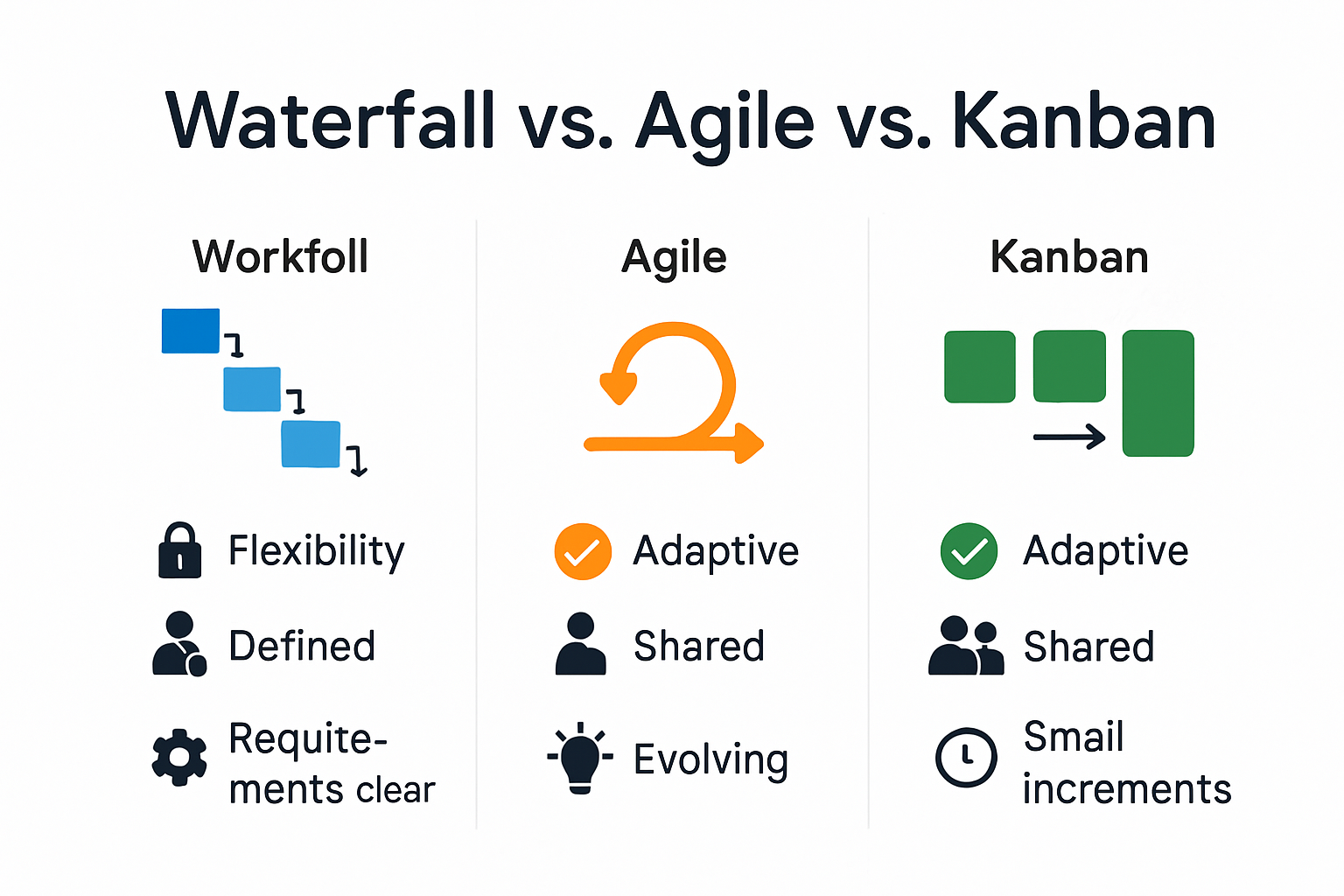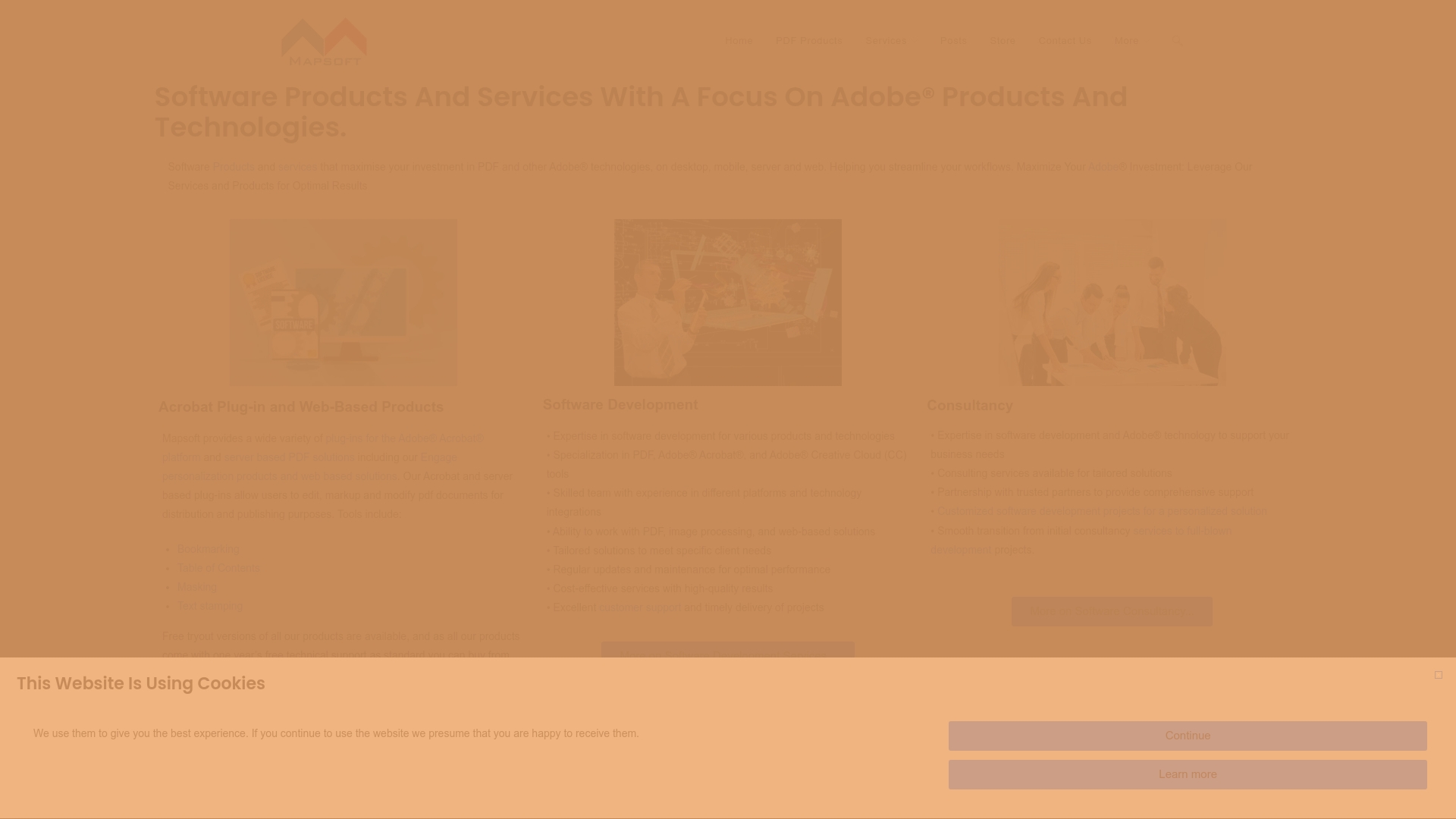Digital project management is changing faster than anyone expected and new tools are rewriting the rules for teams everywhere. But while everyone talks about fancy dashboards and cloud migrations, the real surprise is how over 1,000 one-click AI-powered actions are now available in Adobe Creative Cloud, making repetitive tasks vanish almost instantly. Technology is stealing the spotlight, but it is human skills like adaptability, collaboration, and continuous learning that will shape who actually thrives in 2025.
Table of Contents
- What Is Digital Project Management Today
- Essential Skills For It And Document Teams
- Leveraging Adobe Tools For Better Workflows
- Top Tips For Enterprise Pdf Integration
Quick Summary
| Takeaway | Explanation |
|---|---|
| Integrate advanced digital tools | Leverage platforms like Adobe for streamlined workflows and efficiency. |
| Emphasize soft skills alongside technical skills | Effective communication and collaboration are crucial in managing remote teams. |
| Adopt a flexible methodological approach | Choose between Agile, Waterfall, or Kanban based on project needs and team dynamics. |
| Prioritize sustainability and continuous learning | Foster adaptability and regular skills updates in fast-evolving digital landscapes. |
| Implement comprehensive PDF management strategies | Establish governance protocols to enhance document security and accessibility effectively. |
What Is Digital Project Management Today
Digital project management represents a sophisticated approach to coordinating complex technological initiatives using advanced digital tools and methodologies. This discipline has transformed how organizations plan, execute, and monitor projects across various industries.
Core Components of Modern Digital Project Management
Digital project management goes beyond traditional project tracking. According to Enginuity, it encompasses comprehensive practices that include planning, execution, communication, collaboration, resource allocation, budget management, and post-project review. Teams now leverage digital platforms to create dynamic, interconnected workflows that adapt quickly to changing project requirements.
Key elements include:
- Project Planning: Developing detailed digital roadmaps with clear objectives
- Resource Tracking: Real-time monitoring of team capabilities and workload
- Communication Platforms: Integrated tools enabling seamless team interaction
Methodological Approaches in Digital Project Management
Indeed.com highlights multiple methodological frameworks that define modern digital project management. Organizations can choose between approaches like Waterfall (linear, sequential), Agile (flexible, iterative), and Kanban (visual workflow management) depending on project complexity and team structure.

To help clarify the main differences between leading digital project management methodologies mentioned above, here is a comparison table outlining their characteristics:
| Methodology | Main Approach | Best For | Key Features |
|---|---|---|---|
| Waterfall | Linear, Sequential | Well-defined, predictable projects | Step-by-step phases, little iteration |
| Agile | Flexible, Iterative | Dynamic, evolving projects | Sprints, regular feedback, adaptability |
| Kanban | Visual Workflow | Continuous workflow projects | Task boards, visual limits, flow optimization |
The University of Arizona Libraries emphasize the critical importance of documentation and clear communication. Their guidance recommends creating comprehensive memorandums of understanding that explicitly define team roles, collaboration strategies, and expected project outcomes. This approach ensures transparency and reduces potential miscommunication risks.
Modern digital project management integrates sophisticated technological tools with human-centric collaboration strategies. Professionals must balance technical proficiency with strong interpersonal skills, creating environments where digital workflows complement human creativity and problem-solving capabilities. By embracing flexible methodologies and leveraging advanced digital platforms, organizations can transform complex projects into streamlined, successful initiatives.
Essential Skills for IT and Document Teams
The evolving digital project management landscape demands a sophisticated blend of technical prowess and interpersonal capabilities from IT and document teams. Modern professionals must navigate complex technological ecosystems while maintaining human-centered collaboration strategies.
Digital Intelligence and Technical Competencies
According to a 2023 systematic literature review, emerging competencies for IT project managers now extend far beyond traditional technical skills. Digital intelligence has become a critical component of professional effectiveness. This includes advanced capabilities in data analysis, digital tool adaptation, and understanding complex technological ecosystems.
Critical digital skills include:
- Cloud Platform Management: Understanding and orchestrating multi-cloud environments
- Cybersecurity Awareness: Implementing robust security protocols
- Automation Technology: Developing and managing intelligent workflow systems
Soft Skills and Collaborative Capabilities
Research from leading technology studies emphasizes that digital skills must be complemented by robust soft skills, particularly when managing remote and distributed teams. Emotional intelligence, communication flexibility, and adaptability have become paramount in successful digital project management.
Effective teams now require professionals who can seamlessly transition between technical problem-solving and nuanced interpersonal communication. This means developing skills in conflict resolution, cross-functional collaboration, and dynamic team leadership. Check out our guide on optimizing document workflows for deeper insights into team collaboration technologies.
Sustainability and Continuous Learning
A 2023 systematic literature review highlighted sustainability as an emerging critical competency for digital project teams. This goes beyond environmental considerations, encompassing sustainable work practices, technological adaptability, and long-term organizational resilience.
Professionals must commit to continuous learning, staying ahead of technological shifts and emerging digital methodologies. This involves regular skills updates, cross-disciplinary training, and maintaining a proactive approach to professional development. The most successful IT and document teams will be those that can rapidly integrate new technologies while maintaining human-centered collaboration strategies.
The future of digital project management requires a holistic approach that balances technological sophistication with human creativity, adaptability, and strategic thinking.
Leveraging Adobe Tools for Better Workflows
Digital project management has entered a transformative era where Adobe tools are becoming critical enablers of efficiency, collaboration, and intelligent workflow design. As organizations seek more sophisticated approaches to managing complex projects, Adobe’s ecosystem offers powerful solutions that redefine productivity and team coordination.
Workflow Automation and Intelligence
Adobe Workfront represents a breakthrough in workflow management, providing organizations with advanced automation capabilities. The platform enables teams to create customizable templates, integrate multiple applications, and gain real-time visibility into project progress. Modern digital project managers can now configure complex workflows with unprecedented precision and adaptability.
Key automation features include:
- Template-Based Workflows: Rapid project setup and standardization
- Cross-Application Integration: Seamless data transfer between different tools
- Real-Time Progress Tracking: Comprehensive project visibility

The following table summarizes key automation and AI features available in Adobe tools that enable more efficient and intelligent project workflows:
| Feature | Description | Benefit |
|---|---|---|
| Template-Based Workflows | Pre-built templates to accelerate setup | Fewer errors, faster starts |
| Cross-Application Integration | Connects multiple tools for seamless data transfer | Eliminates manual data entry |
| Real-Time Progress Tracking | Monitors tasks and milestones instantly | Transparency, faster adjustments |
| AI-Powered One-Click Actions | Automates repetitive tasks in Creative Cloud | Saves time, increases creativity |
| Natural Language AI Agents | Use plain English to access over 1,000 features | Discover and use features easily |
AI-Enhanced Creative Workflows
Adobe’s 2025 innovations introduce groundbreaking AI agents within Creative Cloud that dramatically transform digital project management. These intelligent systems provide natural language access to over 1,000 one-click actions in applications like Photoshop, effectively learning and handling repetitive tasks while assisting professionals in mastering new features.
Learn more about streamlining your workflow automation through advanced Adobe tools. The AI-powered capabilities enable teams to focus on strategic creativity rather than getting bogged down by manual processes.
Creative Content Generation and Management
According to Adobe’s emerging technology reports, tools like Adobe Firefly are revolutionizing content creation workflows. These advanced platforms enable real-time AI-assisted edits, sophisticated video content generation, and 3D asset creation, transforming how teams conceptualize and execute digital projects.
The future of digital project management lies in leveraging these intelligent tools that understand context, anticipate needs, and provide adaptive solutions. Adobe’s ecosystem is not just about software anymore it represents a comprehensive platform for intelligent, collaborative work. By integrating AI, automation, and creative technologies, organizations can create more responsive, efficient, and innovative project management strategies that adapt to rapidly changing digital landscapes.
Top Tips for Enterprise PDF Integration
Enterprise PDF integration represents a critical strategic approach for organizations seeking to optimize document management, information security, and workflow efficiency. As digital transformation accelerates, businesses must develop comprehensive strategies that go beyond simple file conversion.
Governance and Integration Standards
EDUCAUSE recommends establishing robust governance processes for third-party integrations. This involves creating a comprehensive software catalog and developing clear protocols for managing electronic documents. Enterprises must implement structured frameworks that ensure consistent PDF handling across different departments and technology platforms.
Key governance strategies include:
- Centralized Document Management: Establishing unified integration protocols
- Access Control: Implementing granular permissions for document interactions
- Compliance Tracking: Monitoring document usage and modifications
Accessibility and Document Quality
The California Department of Education emphasizes the critical importance of creating accessible PDFs by starting with fully accessible source documents. This approach ensures that PDF integrations meet modern accessibility standards, enabling organizations to support diverse workforce needs and comply with regulatory requirements.
Explore our guide on creating searchable PDFs to understand the nuanced techniques for maintaining document quality during enterprise integration. Effective PDF management goes beyond simple file conversion it requires a strategic approach to information architecture and usability.
Security and Compliance Frameworks
According to The National Archives, building effective enterprise-wide electronic records management requires a comprehensive governance strategy. This involves developing rigorous security protocols, implementing advanced encryption methods, and creating audit trails for all PDF interactions.
Modern enterprises must view PDF integration as more than a technical process it is a critical component of organizational information strategy. By implementing intelligent integration frameworks, businesses can transform PDF management from a simple file handling task into a strategic asset that enhances collaboration, ensures compliance, and supports digital transformation initiatives.
To summarize the key focus areas for successful enterprise PDF integration, the following table outlines best practices across governance, accessibility, and security:
| Focus Area | Best Practice | Objective |
|---|---|---|
| Governance | Centralized management and defined protocols | Consistency and control |
| Access Control | Granular permissions for document interactions | Protect sensitive information |
| Compliance Tracking | Monitor usage and modifications | Meet regulatory requirements |
| Accessibility | Ensure PDFs are created from accessible source documents | Support workforce & compliance |
| Security | Implement strong encryption and audit trails | Safeguard data and trace actions |
Successful PDF integration in 2025 demands a holistic approach that balances technological capabilities with strategic organizational objectives, creating flexible, secure, and intelligent document ecosystems.
Frequently Asked Questions
What are the core components of modern digital project management?
Modern digital project management includes comprehensive practices such as project planning, resource tracking, communication, collaboration, budget management, and post-project review, all facilitated by advanced digital tools.
How can Adobe tools enhance digital project management workflows?
Adobe tools, such as Adobe Workfront, offer advanced automation capabilities, template-based workflows, cross-application integration, and AI-powered features, significantly improving efficiency and collaboration within teams.
What skills are essential for IT and document teams in digital project management?
Essential skills include digital intelligence and technical competencies (like cloud management and cybersecurity), soft skills (such as emotional intelligence and communication), and a commitment to sustainability and continuous learning in the fast-evolving digital landscape.
What are the different methodological approaches to digital project management?
The main methodological approaches include Waterfall (linear and sequential), Agile (flexible and iterative), and Kanban (visual workflow management). The choice depends on the project’s complexity and the team’s structure.
Supercharge Your Adobe Project Workflows with Mapsoft
Are you feeling overwhelmed by the pressure to automate repetitive tasks, ensure airtight PDF governance, and keep pace with the fast-evolving demands of digital project management? The article highlights how mastering both sophisticated tools and human skills is now essential for enterprise success—especially when dealing with complex document workflows and integration standards.

Take control with Mapsoft.com and empower your team to work smarter. Imagine configuring automated batch workflows, achieving rock-solid PDF security, and handling large-scale document processing without missing a beat. Our PDF Hub platform lets you merge, convert, OCR, redact, and govern documents—all while staying fully compatible with Adobe Creative Cloud applications. Need to solve challenges like seamless PDF integration or automating workflow actions? Start by exploring our web-based Mapsoft PDF Hub and discover how our solutions can streamline your digital project management. Visit us now to see how you can close the gap between technology and productivity today.
Recommended
- ExtendScript – Mapsoft
- Automating Workflow with Adobe Acrobat’s Actions
- Adobe Acrobat for Architects and Engineers: A Tool for Success
- Exploring the Different User Interfaces for Adobe Products
- Production Test Explained: Best Practices and Tools for 2025
- Top Growth Hacking Secrets for Marketers in 2025



